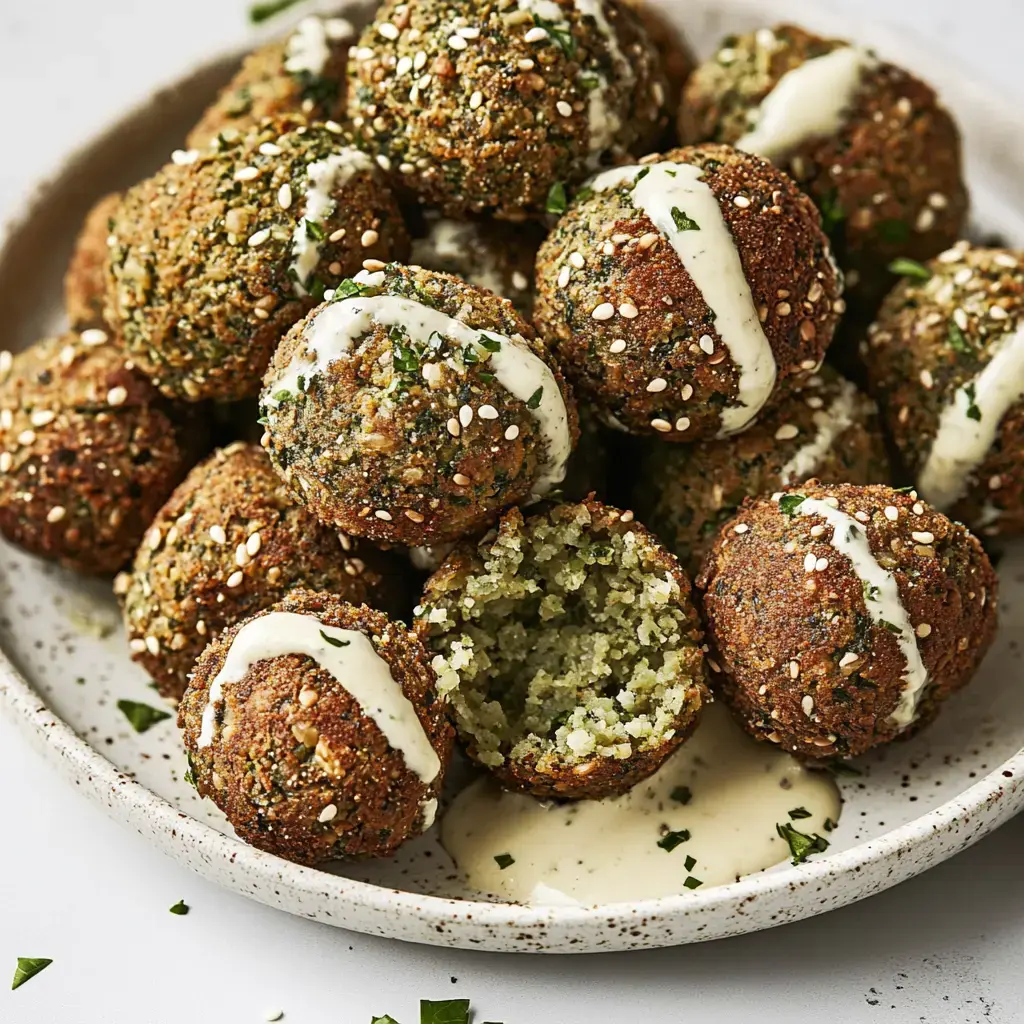 Pin it
Pin it
I'm sharing my passion project with you today: incredible homemade falafel! My kitchen smells amazing right now with all these Middle Eastern spices as I shape the last few balls. Ever since my first taste, this dish from the Middle East has grabbed my heart and become my go-to specialty.
The backstory of my falafel journey
Years back, I stumbled into a tiny Berlin eatery and tried authentic falafel for the first time. I was hooked instantly. Those crunchy little chickpea balls with their perfect seasoning pushed me to create my own take on them.
What goes in my mix
I always start with dried chickpeas soaking overnight in my big bowl. Then come fresh herbs I usually grab from the local market and carefully selected spices, some of which I grind myself. Every single ingredient plays its own part in creating that magical flavor combo.
Getting started right
My prep work starts the evening before. The chickpeas get their baking soda bath - a small but game-changing trick I learned from a Lebanese friend. By morning, they're just right for making falafels that are juicy but not mushy.
Setting everything up
I really enjoy the prep stage in my kitchen. The fresh smell fills the room while I wash herbs and chop onions. I toast the spices quickly in a pan first - it wakes up their essential oils and makes everything taste even better.
Where the magic happens
The real fun begins when everything goes into the food processor. I blend carefully, watching the green mixture come together. Getting the texture just right is crucial - not too smooth, not too chunky. It's something I've gotten a feel for over time.
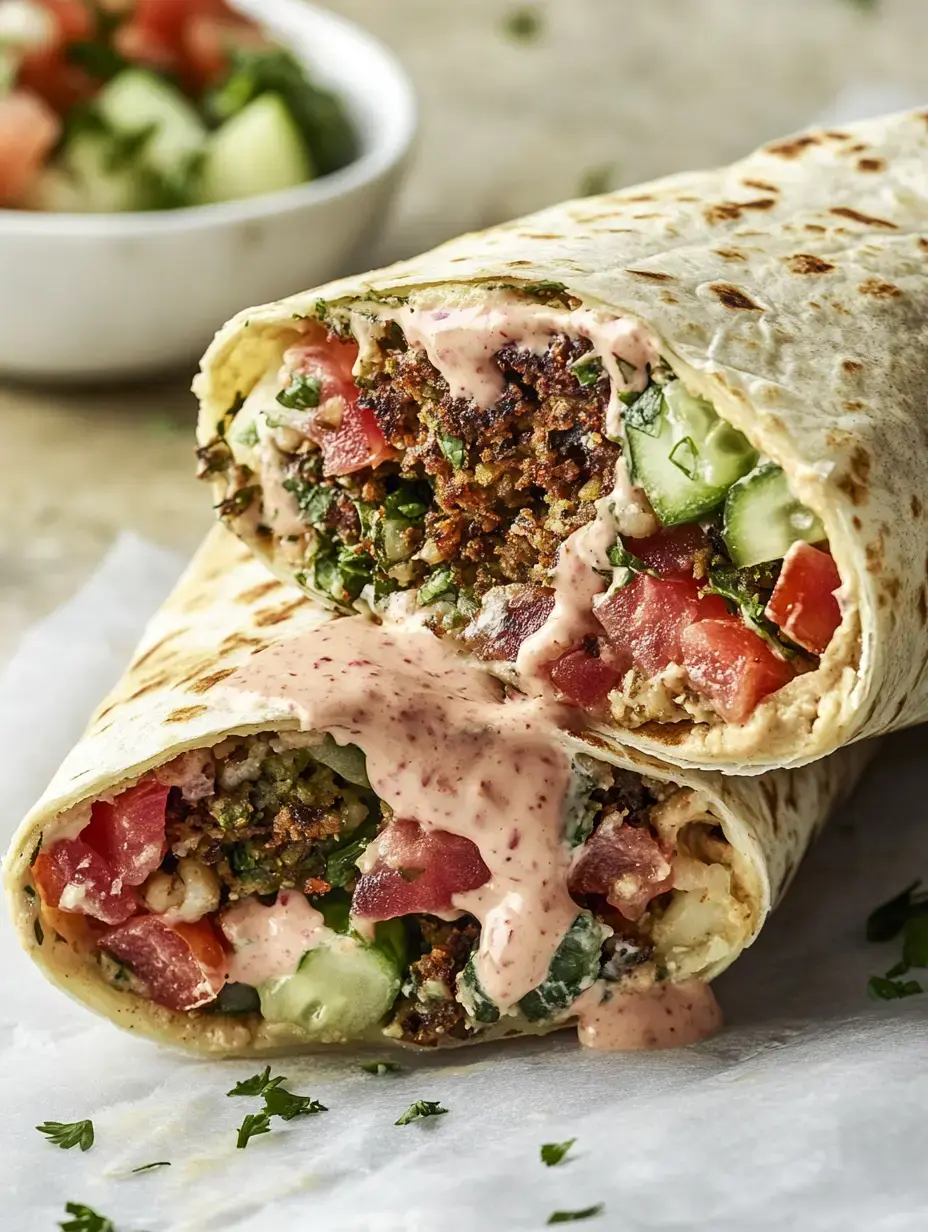 Pin it
Pin it
Taking a crucial break
Letting the mixture rest pays off big time later. During this waiting period, I usually grab a cup of tea and daydream about how the finished falafels will turn out. The spices meld together, the mixture firms up - getting perfect for the next part.
Shaping with care
I find shaping falafels totally relaxing. With slightly damp hands, I roll small, even balls - sometimes I flatten them like little cookies. Each shape has its good points - the balls stay extra juicy inside while the flat ones get super crispy.
The exciting part
Frying is when things get really interesting. When the first falafels hit the hot oil and turn golden, my kitchen fills with the most tempting smell. I watch them closely until they reach that perfect golden-brown color that makes my mouth water.
How I like to serve them
Nothing beats serving my falafels straight from the pan. I pair them with homemade hummus, fresh pita bread, and a creamy tahini sauce mixed with lemon and fresh herbs. Add some crunchy veggies and sometimes my homemade pickles to complete the meal.
A lighter option
When I want something less heavy, I bake the falafels instead. A little drizzle of good olive oil helps them get nice and crispy in the oven too. The taste is different but just as yummy.
My key secrets
I've done loads of testing over the years and learned some important lessons. Never use canned chickpeas - they turn out too mushy. Don't skip the resting time in the fridge. And always be generous with the fresh herbs.
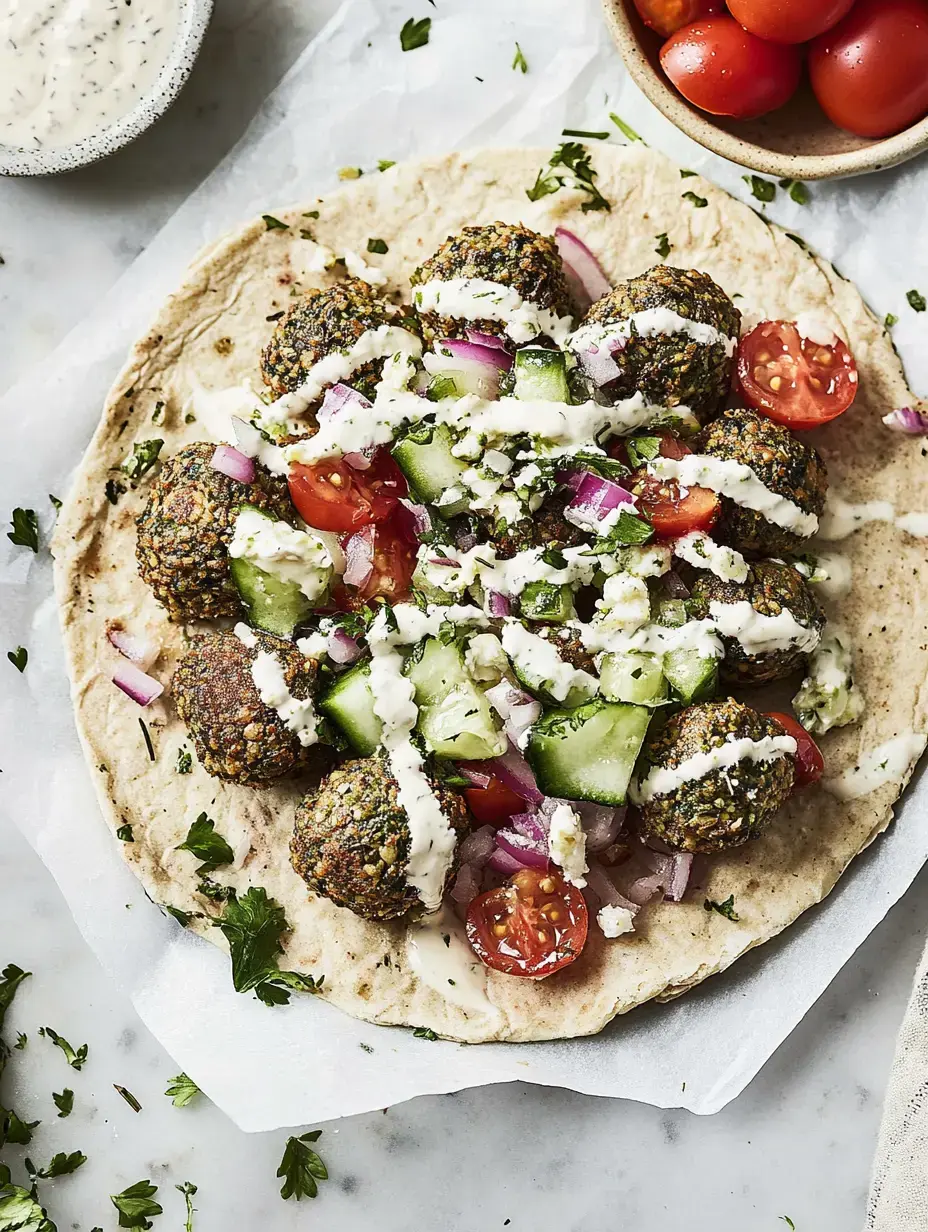 Pin it
Pin it
My baking soda trick
A small teaspoon of baking soda makes a huge difference in my falafels. They become airy and light, almost like little clouds with a crispy shell. I got this tip from my neighbor from Jerusalem, and it completely changed my falafel game.
Blending the spices
I always grind cumin and coriander seeds fresh in my spice mill. The smell it creates is amazing. Combined with the fresh herbs, it gives my falafels that beautiful green color they're known for.
My thoughts after perfecting them
After countless tries and tweaks, I'm really proud of my falafel version. It mixes tradition with my own special touch, and I can't help smiling when guests ask me for the recipe.
Building on tradition
My trips through the Middle East showed me how diverse falafels can be. Every region does them a bit differently, which makes them so fascinating. In my kitchen, I blend these traditions with my own experiences.
Creating a feast
When I have friends over, I love setting up a big Middle Eastern spread. Besides the falafels, I'll make my homemade hummus, colorful pickled veggies, and various sauces. The presentation is half the fun!
Balancing textures
For me, the most important thing about falafels is getting that balance between the crispy outside and moist inside. When that first bite gives you a crunch followed by all those spicy flavors inside, I know they've turned out just right.
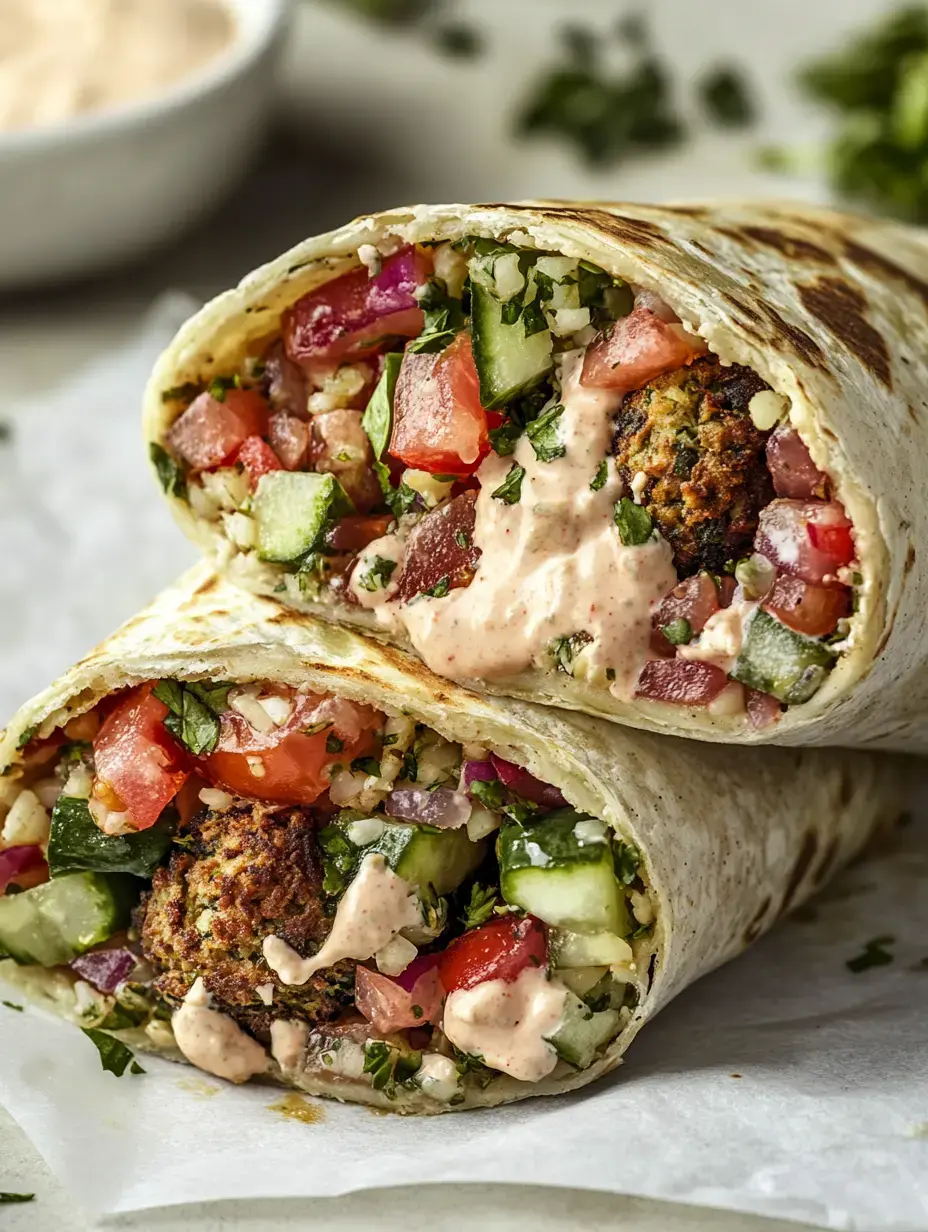 Pin it
Pin it
Nutritious plant power
I cook vegan dishes often, and falafels are my absolute favorite. They're so rich in protein and fiber that even dedicated meat-eaters can't get enough of them.
Mastering the fry
Getting the right temperature is everything. I use a thermometer to keep it at exactly 180 degrees. Too cold and they get greasy, too hot and they burn outside. With practice, you develop a feel for it.
My creative twists
Sometimes I play around with beet falafels or add spinach to the mix. The basic technique stays the same, but these new ingredients bring exciting colors and flavor notes to the dish.
Great for gatherings
My falafels are always a hit at family celebrations. I make big batches and keep them warm in the oven. Everyone can build their own favorite falafel sandwich with all the different dips and sauces.
Smart meal prep
I often freeze portions of the uncooked mixture. This way, I always have fresh falafels on hand. Once thawed and freshly fried, they taste just as good as newly made ones.
Sauce galore
I love serving different sauces with my falafels. From creamy hummus to spicy harissa to fresh mint yogurt - the variety makes each meal feel special.
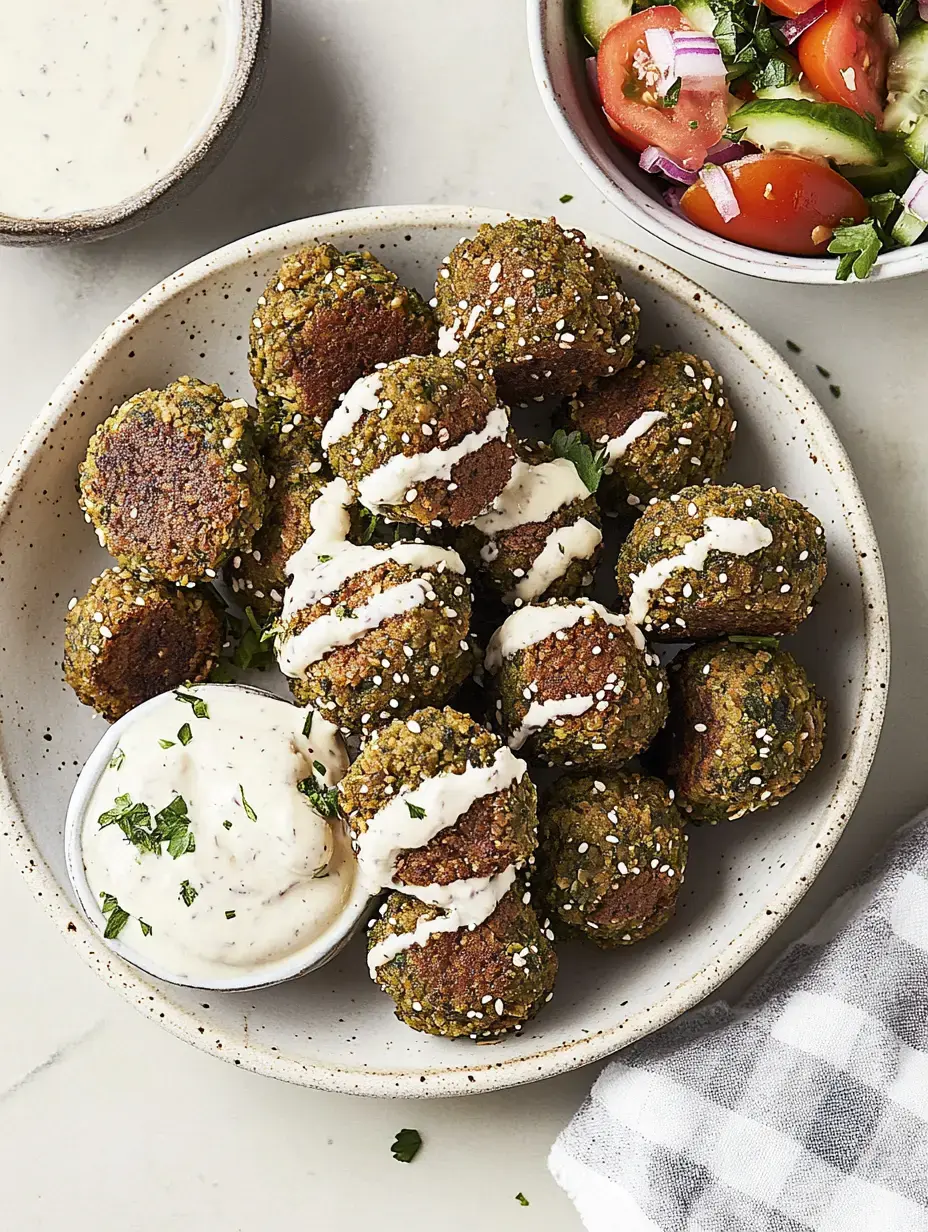 Pin it
Pin it
Global comfort food
What I love about falafels is how universally loved they are. They've gone way beyond their homeland and won fans worldwide. In my kitchen, they've become a piece of home that I love sharing with others.
Frequently Asked Questions
- → Wozu braucht man die Kühlzeit bei Falafel?
Wenn die Masse kühlt, löst sich Stärke und die Bällchen bleiben nachher in der Pfanne zusammen. Außerdem werden die Aromen beim Ruhen noch stärker.
- → Sind gekochte Kichererbsen für Falafel geeignet?
Leider nicht. Du solltest trockene Kichererbsen nehmen, die du einweichst. Mit den gekochten klappt die Konsistenz einfach nicht.
- → Wie gelingen die Bällchen am besten in Form?
Nimm einfach deine Hände, einen Eisportionierer, einen Falafellöffel oder auch zwei Löffel – alles klappt! So kriegst du schöne Kugeln oder Taler.
- → Wie findest du raus, ob das Öl schon heiß ist?
Stell einen Holzlöffel ins Öl. Wenn gleich kleine Bläschen drumherum aufsteigen, ist die Temperatur (etwa 190°C) perfekt zum Frittieren.
- → Was passt am besten zu Falafel?
Du kannst die Bällchen super mit Hummus, einer Tahin-Soße, den würzigen Sumachzwiebeln, frischem Salat oder warmem Pitabrot genießen.
